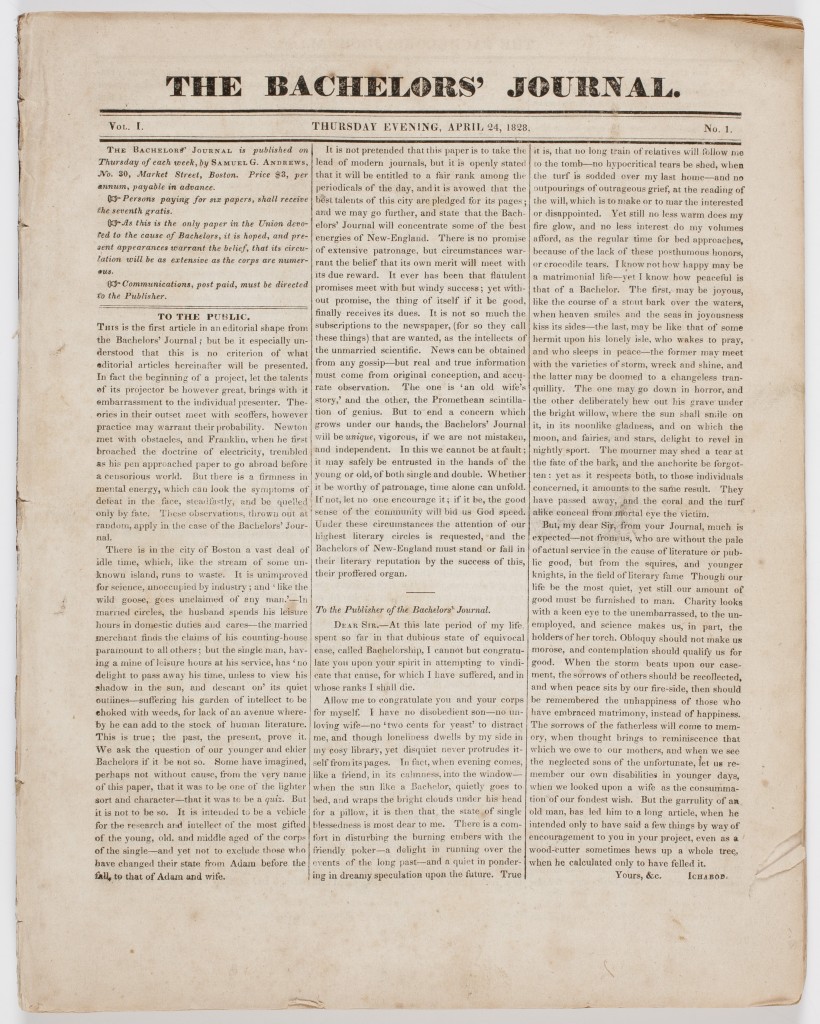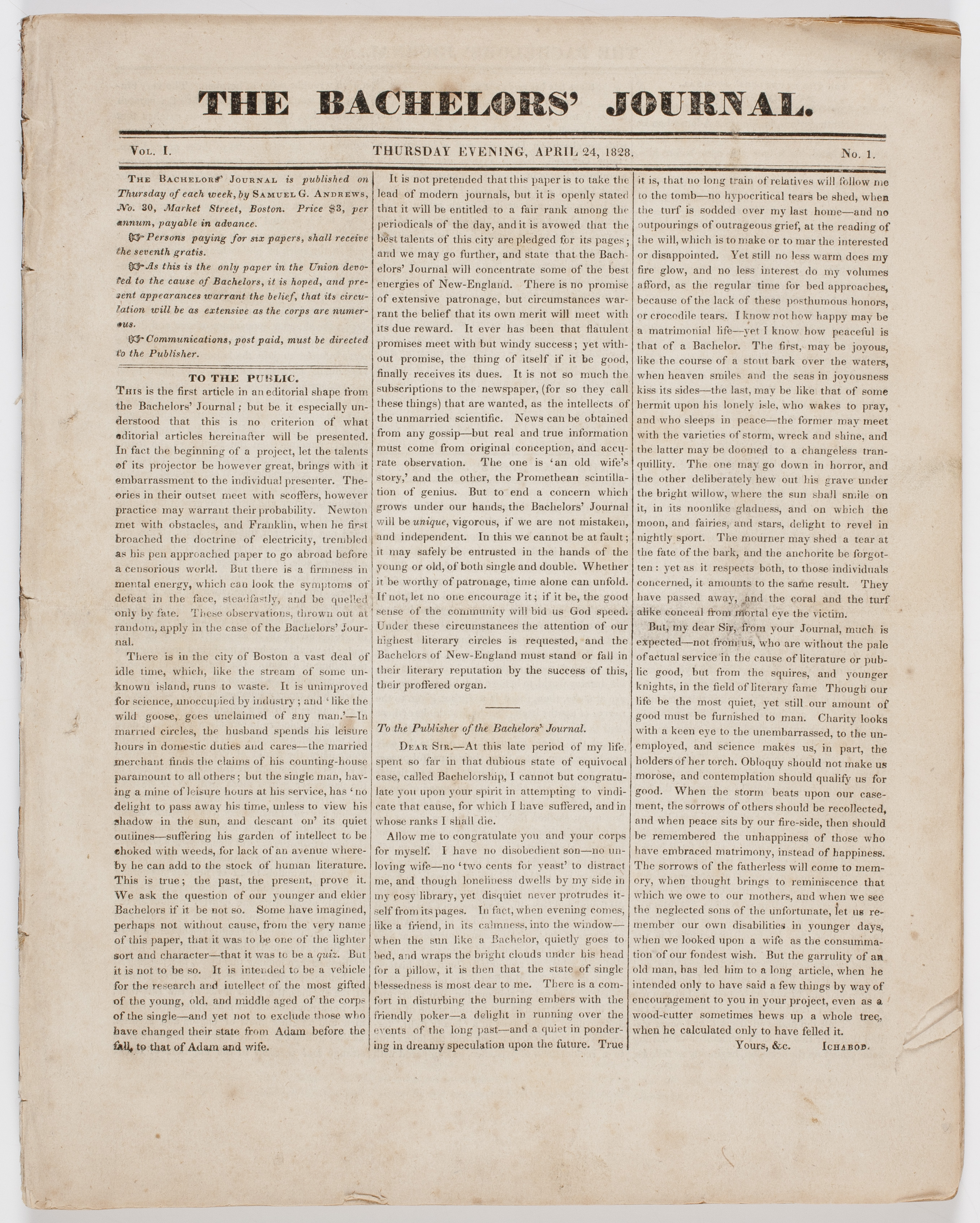 AAS has a strong collection of American periodicals dating back to the 1740s, which often focused on a particular subject or advocacy. Scattered throughout the stacks are serials focusing on topics such as religion, agriculture, temperance, crafts, abolitionism, vegetarianism, reform, anti-masonry, art, or women.
AAS has a strong collection of American periodicals dating back to the 1740s, which often focused on a particular subject or advocacy. Scattered throughout the stacks are serials focusing on topics such as religion, agriculture, temperance, crafts, abolitionism, vegetarianism, reform, anti-masonry, art, or women.
There is one periodical that is unlike any other in the collection, however. The Bachelors’ Journal was published in Boston between April 24 and September 13, 1828, lasting just twenty-two issues. It was edited by John W. Whitman, a lawyer and poet, and published by Samuel G. Andrews. The purpose of this publication was to address the idle time of the unmarried man:
In married circles, the husband spends his leisure hours in domestic duties and cares – the married merchant finds the claims of his counting-house paramount to all others; but the single man, having a mine of leisure hours at his service, has no delight to pass away his time, unless to view his shadow in the sun, and descant on its quiet outlines – suffering his garden of intellect to be choked with weeds, for lack of an avenue whereby he can add to the stock of human literature.
The Bachelors’ Journal is filled with stories, poems, jokes, anecdotes, and commentaries mostly about the single life. In one article the cry was “Divided we stand, united we fall.” There are several pieces written by married men with tales of woe warning bachelors of what may be in store for them if they succumb to matrimony. The editor was a poet, and he selected many poems with titles such as “The Broken Vow,” “Love and Time,” “Corporal Trim’s Advice,” and “The Fatal Kiss.” There are no advertisements in this publication, but there are occasional promotions of theatrical productions that might appeal to the single man. The overall theme of the publication is that the single man has many more options in which to partake and enjoy than the married man.
What is interesting is the year this periodical came out. By 1828 there was a stirring of a women’s movement as they began to assert themselves more. In 1792 Mary Wollstonecraft wrote A Vindication of the Rights of Women. In the 1820s more periodicals were being published with women as a target audience. They were beginning to insist on more rights rather than being treated as property. The Bachelors’ Journal seems to be a reaction to this trend reminding single men what they don’t have to deal with while enjoying the single life.
The Bachelors’ Journal lasted just twenty-two issues. After the last issue, it turned over its subscription list to the Yankee and Boston Literary Gazette.
And what happened to the editor, John W. Whitman? He died in the 1830s (conflicting dates are given) leaving behind a widow. Yes, he lived out the final years of his life a married man.

